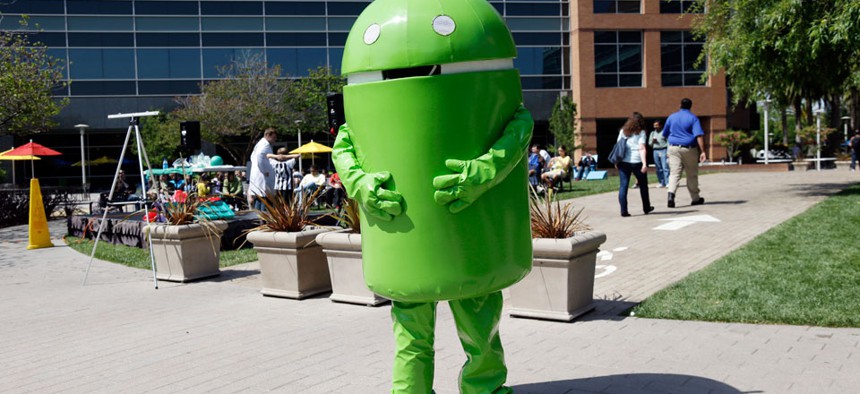How Zombie Phones Could Create a Gigantic, Mobile Botnet

Android could neutralize the vast majority of malware threats out there, the Juniper report said, if it made sure every one of its devices were running the latest version of the operating system. Marcio Jose Sanchez/AP
Android operating system is most vulnerable.
You've heard of the botnet — a collection of enslaved, malware-infested computers that act together to pump out spam and DDoS attacks, often unbeknownst to their owners. For the past decade, botnets have mostly been a problem for the PC world. But, according to a new report on mobile malware, it may not be long before we start seeing botnets built out of an increasingly sophisticated type of device: cell phones.
"It's only a matter of time before that's pervasive," said Karim Toubba, a vice president at Juniper Networks, the publisher of the study.
Google's Android operating system is by far the most vulnerable to outside attackers. Unlike Apple, which forces its iPhone apps through an infamously strict approval process before storing them in a single app store, Android phones are capable of downloading and installing apps from third-party websites.
As with Web browsing, visiting random sites and downloading software whose credentials you can't verify is a recipe for disaster. Yet many of us do it, even without realizing it. Ninety-two percent of the attacks detected by Juniper's mobile security research team last year took place on Android. The remaining 8 percent targeted smaller platforms like Windows Mobile, BlackBerry and Symbian.
It's not just malicious apps—or bugs in legitimate apps—that let attackers get through. Mobile operating systems themselves have vulnerabilities. Hackers sometimes will disguise a piece of malware as a valid system update. Once it's installed, the malware can run in the background, monitor a user's behavior, and report that activity to a central command-and-control machine.
From there, it's not a huge jump to turn a compromised device into a slave. We already know it's possible, because it happens all the time to desktops and laptops.
"The capabilities there are very similar," said Toubba, "to the underlying capabilities of the desktop operating system Linux."
Android could neutralize the vast majority of malware threats out there, the Juniper report said, if it made sure every one of its devices were running the latest version of the operating system. The problem is, even after Google makes updates to Android, the burden is on your wireless carrier to actually push the update to your phone. And they aren't doing it. More than a third of all Android devices haven't been updated since Feb. 2011. More than a quarter of Android devices haven't been updated since Dec. 2011.
When I asked Toubba whether carriers needed to do a better job of updating their customers' phones, he said simply that many were "taking these risks and these threats quite seriously."
NEXT STORY: DISA Plans $450 Million Commercial Cloud Buy


